Survey report
The survey is now closed and it’s time to summarize the results. The overall picture didn’t change much from the first days, so I think these data is pretty representative.
Platform popularity
The most popular platforms are x86-64 physical boxes, VMWare, KVM, and x86 boxes. x86-64 boxes constitute over one half of the installations. This is a bit surprising to me, I thought there are way more virtualized setups than physical ones. The conclusion I make from it: improving hardware support and features that only make sense on bare metal is worth it.
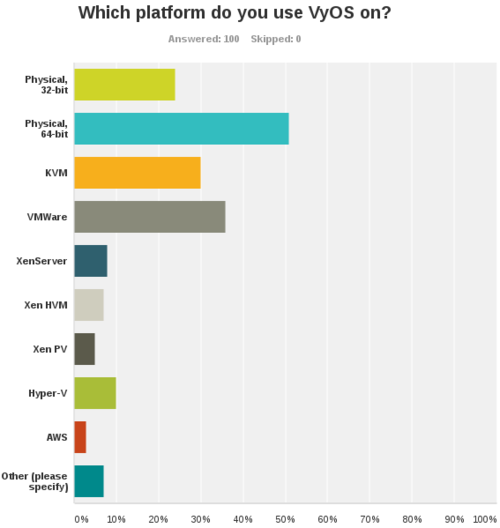
Network type
Most of the installations are at home or small offices (35%), enterprise networks (30%). There are some service providers and very few telecoms. Adding features useful for offices and enterprise networks is a good idea then.

Maybe we should add more features useful for telecoms to gain popularity on that market?
Network bandwidth
The majority of VyOS installations are at networks that have 100-1000 mbit/s bandwidth. Slower and faster networks have about equal share.
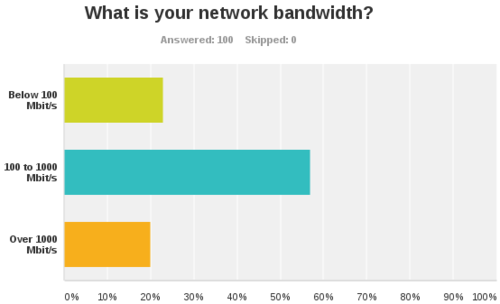
Upgrade strategy
About one half of the users update every time new version is available. Only about 30% upgrade when only to fix bugs they hit. I expected more people to have a conservative upgrade strategy, it’s nice to see people want to upgrade.
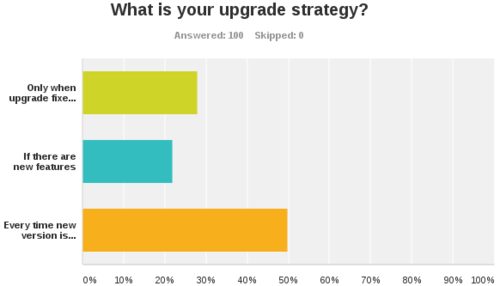
Alpha/beta versions
This one is interesting. About one half of the respondents are willing to install betas, while the other half are not. This is certainly enough to justify publishing betas though.
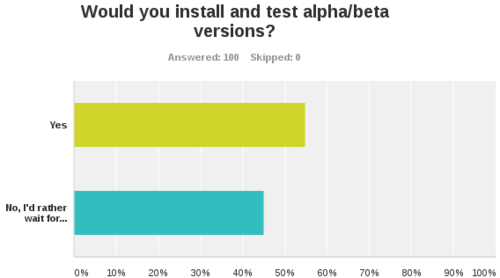
Rolling release
Over 70% of people don’t want new features at cost of stability. That was pretty expectable, as of me.
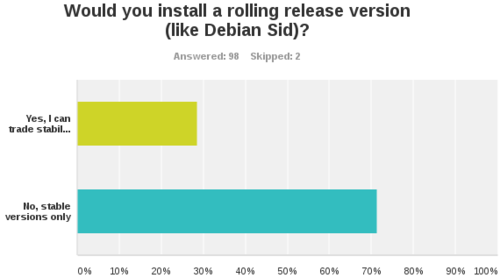
Release cycle
The majority of people are ok with release cycle about 6 months long.
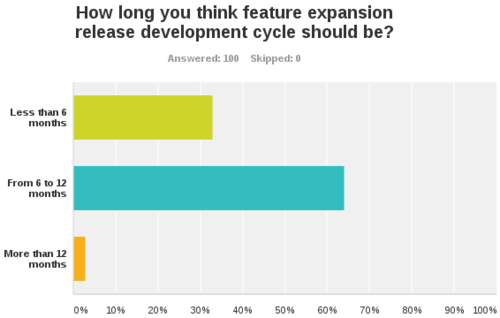
Feature importance
Few people want GUI, some people want RBAC, and most people agree remote API and live rollback are important.
This was a bit of a trick question: all those features require a new backend. So most people implicitly agree it has to be reworked.
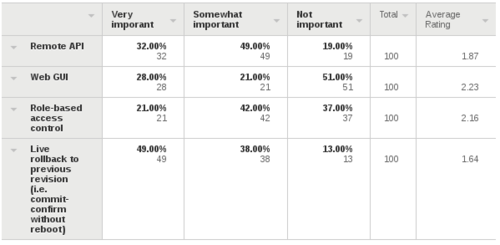
Popularity contest
Over 60% people agree to send usage data if they can configure what they send, and about 20% people agree to do that unconditionally. So adding this functionality certainly makes sense.

Conclusions
- Improving hardware support is a good idea, removing features only useful on physical machines is certainly a bad idea.
- Improving support for features useful in corporate networks is a good idea.
- Improving Xen support is probably not a priority. Or people don’t use it on Xen because Xen support is too bad? Let us now.
- Six month release cycle is fine.
- Alpha/beta versions are probably a good idea, rolling release builds are not.
- Opt-in feature and hardware popularity contest is a good idea..
Comments